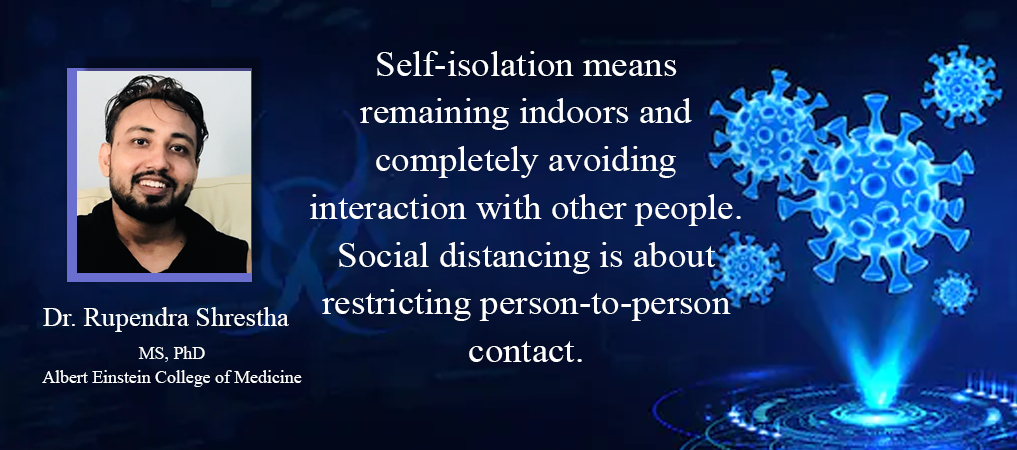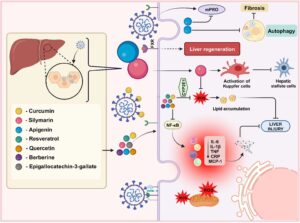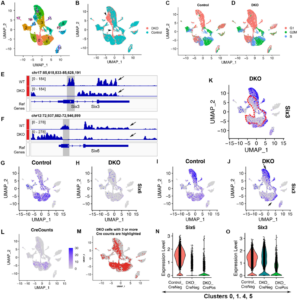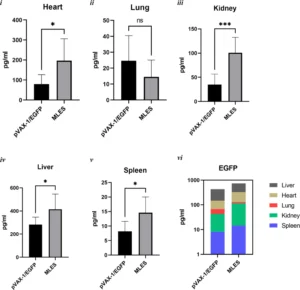Crucial Facts About COVID-19: Stop The Spread

Must Read: Featured – Dr. Rupendra Shrestha
A novel coronavirus (SARS-CoV-2) that cause COVID-19 was discovered a couple of months ago from China. While the virus has been declared pandemic, many questions related to it are still unanswered.
So, the writer revisited important facts about COVID-19, which are of use to the general public.
1. What is COVID-19?
COVID-19 is a coronavirus disease caused by severe acute respiratory syndrome coronavirus 2 (SARS-CoV-2). The virus was first detected in the city of Wuhan, China, on December 2019.
2. What is SARS-CoV-2?
SARS-CoV-2 is a novel virus that is responsible for outbreak of COVID-19 (respiratory illness), which has now spread all over the world.
3. What is known about the virus?
SARS-CoV-2 is a β-coronavirus, an enveloped, non-segmented positive-sense RNA virus. There are four species of coronaviruses (CoV), namely α, β, γ, and δ. α and β species infect mammals, while birds are affected by γ and δ species.
Of the six human-susceptible CoVs, α-CoV (HCoV-229E and HCoV-NL63) and β-CoV (HCoV-HKU1 and HCoV-OC43) are less pathogenic and cause mild respiratory symptoms.
While two other known β-CoV (SARS-CoV and MERS-CoV) result in severe and potentially lethal infections of the respiratory tract. In rows, the SARS-CoV-2 genome sequence is 79.5 per cent, similar to that of a SARS-CoV.
4. What is the incubation period of the virus?
According to the World Health Organization (WHO), the incubation period of SARS-CoV-2 is anywhere between 1–14 days. However, the median incubation time is about 5 days before developing symptoms.
5. How long does coronavirus survive outside of the body?
According to the Center for Disease Control and Prevention (CDC), coronavirus remains viable and infectious in the air for up to 3 hours. It survives on surfaces (plastic and stainless steel) for around 2-3 days.
6. What is the typical host for SARS-CoV-2?
SARS-CoV-2 genome sequence is 96.2 percent identical to that of a bat CoV RaTG13.Based on this result, the bat is suspected of being a natural host of virus origin.
7. How is SARS-CoV-2 transmitted to a human?
SARS-CoV-2 outbreak is likely to be a bat-origin that crosses the species barrier to humans.
Direct contact with unknown intermediate hosts, consumption of wild animals, or spillover from bats could be the main routes of virus transmission to a human.
However, the possible intermediate host is yet to be identified. Although the route of transmission to humans remain elusive, the spread between humans is rapid.
8. What is the mechanism of infection?
SARS-CoV-2 interacts with angiotensin-converting enzyme 2 (ACE2) to infect humans. ACE2 is a cell receptor that is present in the lower respiratory tract of a human.
9. What arethe COVID-19 case-fatality ratio (CFR) and infection-fatality ratio (IFR)?
An overall CFR of 2.3 per cent and IFR of 0.66 per cent was reported in mainland China. The higher case fatality rate is among >80 years and lowest in 0-9 years of age group.
10. What are the signs and symptoms of COVID-19?
Fever, tiredness, dry cough, and shortness of breath are the most common symptoms. About 80 per cent of patients recover without specific treatment, but older people and patients with comorbidities are more prone to becoming severely ill.
11. When to visit doctors during the COVID-19 pandemic?
Seek a doctor for medical attention if emergency warning signs for COVID-19 are noticed. Such sign includes trouble breathing, persistent chest pain, inability to arouse, and bluish face/lips.
12. Why some patients with COVID-19 die?
Older people and patients with comorbidities are more susceptible to complications like acute respiratory distress syndrome (ARDS), sepsis and septic shock, multiorgan failure, thus leading to death.
13. Can virus re-infect after COVID-19 patient has recovered?
As the body’s immune response, it is unlikely to get re-infected with COVID-19. Antibodies produced during infection provide immunity to the specific virus for months or even years.
Antibodies are usually formed 7-10 days after the initial onset of illness to neutralize the virus in the patients. Moreover, how COVID-19 immunity protects against infection in future is yet to be determined.
14. How to boost immunity for a healthy life?
Several body organs, including the immune system, functions better when protected from environmental assaults.
Maintaining a consistent healthy lifestyle can be accomplished by avoiding smoking, moderately consuming alcohol, eating fruits, sufficient sleep, minimizing stress, daily exercise, maintaining a good weight and personal hygiene, etc.
Some powerful immune boosters include yogurt, citrus fruits, spinach, broccoli, ginger, garlic, and almond.
15. Is SARS-CoV-2 a laboratory construct?
SARS-CoV-2 is neither a purposely created, bioengineered virus nor an escape from the laboratory.
16. Is there any possibility of vertical transmission from mother to newborn?
Although there is no conclusive evidence, some research indicates the possibility of vertical transmission.
There are no reports of intrauterine transmission, but cases have been reported of in utero infection.
SARS-CoV-2 was not detected in maternal milk, and pregnancy doesn’t worsen the clinical symptoms. However, due to close contact during feeding, droplet transmission to the newborns may occur.
17. Does the virus infect pets?
Recently, human to cat transmission of COVID-19 was reported in Belgium.
However, chicken, pigs, ducks, and dogs are not susceptible to infection. There is no clear information yet.
18. How useful are soap-water or alcohol-based sanitizers?
Soap-water is more effective in removing germs than hand sanitizers.
But, alcohol-based hand sanitizers effectively reduce the number of germs, but sanitizers do not remove all kinds of organisms. Hand sanitizers with 60-95 per cent alcohol quickly minimize and kill microbes compared to non-alcoholic sanitizers.
19. Is the surgical face mask effective against transmission of SARS-CoV-2?
Yes, the surgical face mask prevents SARS-CoV-2 from spreading and also reduces the transmission of seasonal coronaviruses.
20. Who should wear a mask in an outbreak?
People with symptoms of illness, older people, patients with comorbidities, and frontline healthcare workers should wear a mask.
The use of a mask is intended to prevent the spread of the virus during the outbreak. Depending on availability, use of the mask can be optional to healthy people.
21. Why is it necessary to protect healthcare workers?
Healthcare workers (doctor, nurse, and laboratory scientists) are at the frontline to flight COVID-19 and provide medical care to the patients. Also, during an outbreak, the hospital environment could potentially be a source of virus spread, including healthcare works, patients, and visitors.
22. Who should involve in the testing of COVID-19?
Only certified medical laboratory scientists, pathologists, and physician-scientists should be involved in the testing of clinical samples for COVID-19.
They contribute to diagnostic reasoning and manage the care of patients with suspected or confirmed cases. Proper handling of infectious clinical samples and accurate diagnosis is vital in healthcare for prevention and treatment.
23. Who should be tested for COVID-19?
Not everyone needs to be tested for COVID-19. Only hospitalized patients, symptomatic medical staff, people in close contact with infected patients, and visitors from the epidemic area should be tested for COVID-19. Most people suffer from mild illnesses and may recover at home.
24. Is COVID-19 curable?
So far, no approved antiviral therapies have been approved for COVID-19. Many of the symptoms can be cured, and hence, treatment depends on the patient’s health condition.
25. Is there any vaccine available for COVID-19?
Few vaccines for novel coronavirus are under trial and may take years to be available for use to common people.
26. What are investigational agents for COVID-19?
Clinical studies are being conducted on a number of antiviral and supporting drugs, including remdesivir, chloroquine, hydroxychloroquine, and tocilizumab. A list of international clinical trials is available on the https://clinicaltrials.gov/.
27. What is an alternative therapy for COVID-19?
Passive antibody therapy (convalescent sera of individual recovered from COVID-19) could be an alternative one. At this point, WHO does not recommend any medicines to treat COVID-19 or to cure it.
28. What is shielding, self-isolation, social distancing, and quarantine?
Shielding is for those considered to be extremely vulnerable as a consequence of a specific health condition.
Self-isolation means remaining indoors and completely avoiding interaction with other people.
Social distancing is about restricting person-to-person contact.
Quarantine is a state, period, or place of isolation in which people who have traveled or who have been exposed to infection are kept.
29. Is lockdown a solution to control COVID-19?
Yes, lockdown helps to prevent the spread and transmission of virus between humans. It is an emergency protocol that usually stops people from leaving an epidemic area.
30. Why have the South Asian countries reported less cases?
There is no clear explanation behind the low cases in south Asian countries.
But, it may be due to lack of mass testing, immunization with BCG, and the small number of visitors migrating to these countries.
31. Is hygiene hypothesis preventive for COVID-19?
There is no clear explanation behind link between them yet.
32. Why are the people working remotely during an outbreak?
It is to break the chain of virus transmission between humans and help to control the spread of the virus. “Stay home to protect yourself and then protect others.”
33. Why is mass and indiscriminate testing necessary?
Mass and indiscriminate testing is the only way to stop the spread of the virus.
Identification and treatment of the disease limits the disease’s expansion.
So, initiate to find, isolate, test, and treat every case, to break the chains of virus transmission.
34. How active surveillance systems and rapid response teams be helpful in an outbreak?
Active surveillance helps to provide the most reliable and timely information about the circumstances of the outbreak.
They maintain regular communication with healthcare providers or the general public to obtain information.
Rapid case detection and response team is essential to stopping an outbreak through efficient monitoring and laboratory testing, effective management, and a strong workforce.
35. What is PPE, and why is it necessary for healthcare workers?
PPE (Personal Protective Equipment) includes gowns, masks, gloves, protective glasses and shoes or face shields, respirators and full-body suits, which are critical for reducing exposure to workplace hazards.
36. What are patients kept in negative pressure isolation room in the hospital?
Negative pressure rooms isolate patients with contagious diseases to shield everybody else from exposure.
This helps in trapping and holding potentially harmful particles within the room. It allows air to flow into the room but does not allow it to escape.
37. Why is health and science correspondence necessary in Nepal?
Health and science correspondence is necessary to convey evidence-based news and to deliver higher content, reliable, and accurate health stories. They have a much higher capacity for knowing the problems, accessing credible sources, keeping broad field expertise, connecting with their organizations, and advocate for quality reporting.
38. Why is Nepal struggling to test COVID-19?
While the world lacks sufficient SARS-CoV-2 testing capacity, Nepal has a specific lack of knowledge about DNA testing and molecular genetic facilities in the health care system.
In addition, Nepal does not have enough medical geneticist and genetic counselor whileignoring the value of genetic testing by the doctor in medicine.
39. How to control COVID-19 in Nepal?
WHO recommended standard precautions should be emphasized, and in particular, careful hand hygiene should be maintained.
Some critical factors need to be introduced, including awareness of the epidemiological situation in the country and worldwide, activating 24/7 emergency response services such as public health authorities, making on-site availability of sufficient PPE for healthcare workers, isolating suspected COVID-19 cases, arranging diagnostic testing, safety screening of frontline personnel in the event of an outbreak, environmental cleaning and waste management, and long-term surveillance, etc.
40. How can lack of support from people disturb prevention?
Effective attempt to search and diagnosis help in breaking the chain of disease transmission in society.
But, a one unsupportive people or a group can interfere the efforts to prevent disease and cause a major outbreak.
This loophole might be tough to control without citizen discipline, and support for social distancing by all citizens
41. How to confront a viral pandemic when vaccines and drugs are months or year away?
An old method known as passive antibody therapy helps doctors fight COVID-19. It requires the use of virus-neutralizing antibodies that are obtained from COVID-19 recovered patients.
42. How should Nepal prepare for possible future epidemic?
Nepal needs careful strategic planning before an outbreak happens.
Such planning takes considerable time and should therefore be addressed urgently.
Active planning should be implemented for operational planning, including occupational safety measures, stockpiling of equipment and drugs, professional training,and triage policy development.
In addition, Nepal should invest in health and research to achieve stronger pandemic preparedness.
43. What Nepal should learn from COVID-19 for future?
While the extent of the COVID-19 outbreak remains uncertain, there is considerable concern about the global spread of the virus.
A few useful insights about how future possible threats can be mitigated, includes early warning and accurate diagnosis, transparency to the public, activate 24/7 emergency response system, initiate active surveillance, precise documentation of possible carriers and infected people, and prepare with basic needs like facemasks and sanitizers.
In addition, the government should robust research and biotech industry.
44. How to find positivity in this grim pandemic situation?
While being bound to the home during a pandemic, people may find positivity in recreating their hobbies such as painting, crafting, singing, and dancing, engaging in meditation and yoga, reducing stress in yourself,and maintaining healthy and happy family time.
Dr. Shrestha (MS, PhD) is a Clinical Molecular Geneticist, working at Department of Genetics, Department of Opthalmology and Visual Sciences at Albert Einstein College of Medicine, New York, USA.








